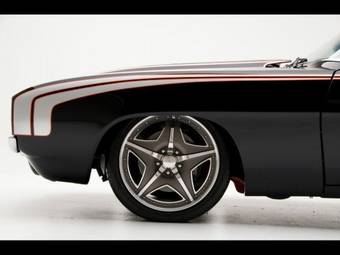1969 Dodge Challenger
Photo #1 - Enlarge photo 590x442

Photo Information (Width: 340px, Height: 255px, Size: 10Kb)
| Engine size - Displacement - Engine capacity: | 9800 cm3 |
| Transmission Gearbox - Number of speeds: | Manual |
| Fuel Type: | Gasoline |
| Drive wheels - Traction - Drivetrain: | FR or RR |
| Price (out of date): | $500000 |
1969 Dodge Challenger specs, Engine size 9800cm3, Fuel type Gasoline, Drive wheels FR or RR, Transmission Gearbox Manual
|
After the founding of the Dodge Brothers Company by Horace and John Dodge in 1900, the Detroit-based company quickly found work producing precision engine and chassis components for the city’s burgeoning number of automobile firms. Chief among these customers were the established Olds Motor Vehicle Company and the then-new Ford Motor Company. Dodge Brothers enjoyed much success in this field, but the brothers' growing wish to build complete vehicles was exemplified by John Dodge's 1913 exclamation that he was "tired of being carried around in Henry Ford's vest pocket." By 1914, he and Horace had fixed that by creating the new four-cylinder Dodge Model 30. Pitched as a slightly more upscale competitor to the ubiquitous Ford Model T, it pioneered or made standard many features later taken for granted: all-steel body construction (when the vast majority of cars worldwide still used wood framing under steel panels, though Stoneleigh and BSA had used steel bodies as early as 1911), 12-volt electrical system (6-volt systems would remain the norm up until the 1950s), and sliding-gear transmission (the best-selling Model T would retain an antiquated planetary design all the way until its demise in 1927). As a result of all this, as well as the brothers' well-earned reputation for quality through the parts they had made for other successful vehicles, Dodge cars were ranked at second place for U.S. sales as early as 1916. The same year, Henry Ford decided to stop paying dividends, leading to the Dodge brothers filing suit to protect approximately a million dollars a year they were earning; this led Ford to buy out his shareholders, and the Dodges were paid some US$25 million. » Read More About Dodge |



